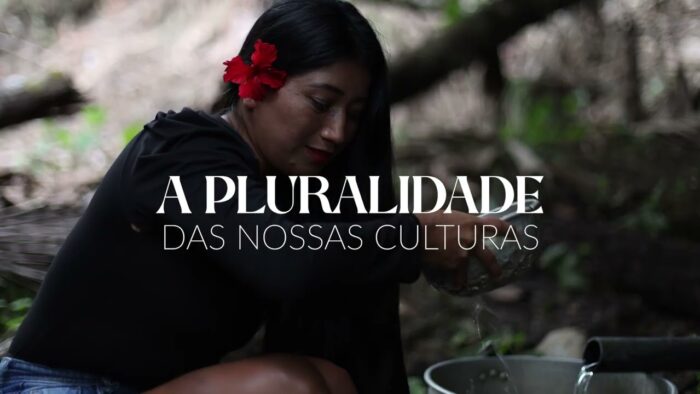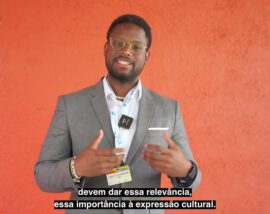Organization: UN Children’s Fund
Country: El Salvador
Closing date: 01 Sep 2017
TÉRMINOSDE REFERENCIA
Consultoría internacional para una evaluación formativa de la Iniciativa Hospital Amigo del Bebé Ampliada
República Dominicana
Visitar el siguiente enlace para obtener los términos de referencia completos:TDR Evaluación HAB 15 de agosto 2017 (Publicación).pdf
La Iniciativa Hospital Amigo del Bebé se ha establecido como una modalidad de certificación de los hospitales que logran implementar servicios de atención materno-infantil con calidad y calidez, en correspondencia con un conjunto de estándares y protocolos preestablecidos. Ha sido adoptada por el Ministerio de Salud Pública para valorar y reconocer el compromiso y esfuerzo de dichos centros hospitalarios, en cuanto al logro de resultados en materia de reducción de la mortalidad materna y neonatal.
La Iniciativa Hospital Amiga del Niño (IHAN) se concibió en el marco del esfuerzo mundial de la OMS y UNICEF para estimular prácticas que protejan, promuevan y apoyen la lactancia materna.
Posteriormente, los materiales de la IHAN se actualizaron y ampliaron, reflejando las experiencias y los nuevos conocimientos alcanzados, así como el reforzamiento del Código Internacional de Comercialización de Sucedáneos de la Leche Materna y el apoyo a madres que no amamantaban. Dicha actualización incluyó, además, módulos sobre VIH y alimentación infantil, atención amigable a la madre, y una mayor orientación para el monitoreo constante de la iniciativa.
El objeto de la evaluación:
El objeto de estudio de la presente evaluación es la Iniciativa Hospital Amigo del Bebe (HAB), en proceso de implementación en 2 hospitales públicos del país: El hospital Reynaldo Almanzar, en la provincia Santo Domingo; y el hospital Taiwán, en la provincia de Azua, en el sur del país.
Objetivo general:
Determinar si el marco conceptual y metodológico que se ha definido para la implementación del HAB, incluyendo sus herramientas y criterios de supervisión y monitoreo, conducirán al resultado esperado y si la iniciativa es pertinente, eficaz y sostenible para ser replicada a nivel nacional.
Objetivos específicos
Pertinencia: establecer si la iniciativa HAB, dirigida a disminuir la mortalidad materna y neonatal, se alinea con las políticas, programas y planes nacionales en materia de salud; si responde adecuadamente a las demandas de las usuarias del servicio en tanto derecho humano, y si se inscribe dentro de las prioridades internacionales pactadas por el Estado Dominicano (CEDAW, CDN, etc.).
Eficacia: determinar si el diseño del HAB y su implementación conducirán al logro de los resultados previstos, tomando en cuenta la eliminación de las barreras identificadas, entre las que citamos:
Mejora de la calidad de la atención
Cumplimiento de los estándares de calidad, las normas, guías y protocolos establecidos para la atención materna y neonatal
Disminución de la violencia obstétrica
Mejora del trato humanizado y respetuoso
Eficiencia: Identificar si la manera como se han utilizado los recursos disponibles (financieros, técnico-profesionales y logísticos) contribuye, de forma adecuada y oportuna, al logro de los resultados previstos.
Sostenibilidad: Identificar si la manera como se ha estado aplicando la IHAB contribuye a generar las capacidades institucionales en el sector salud, a nivel nacional y local, que aseguren que la implementación continúe aun sin la asistencia de UNICEF. Esto implica el documentar lecciones aprendidas y recomendaciones de cara a fortalecer su adopción como política pública, así como la posibilidad de llevarla a escala a nivel nacional. Los resultados de la evaluación deben influir para la mejora y consolidación del modelo HAB.
Aspectos metodológicos
La evaluación se realizará de acuerdo a los principios, normas y estándares de evaluación del Grupo de Evaluaciones de las Naciones Unidas, disponible en http://www.unevaluation.org/document/detail/1914
Productos esperados:
No.
Productos
Fecha de entrega
1
Propuesta metodológica con su plan de trabajo detallado
A los 5 días de la contratación
2
Instrumentos de levantamiento de información (cuantitativos y cualitativos).
A los 10 días de la contratación
3
Informe de avance no mayor de 15 paginas
A los 45 días de la firma del contrato
4
Informe preliminar.
A los 60 días de la firma del contrato
5
Informe final con sus anexos. Debe incluir un resumen ejecutivo con los principales hallazgos, las conclusiones y recomendaciones
A los 90 días de la firma del contrato
6
Presentación power point con los hallazgos relevantes, para compartir con actores claves
A los 90 días de la firma del contrato
Duración de la contratación:
La contratación tendrá una duración de tres meses calendario, contados a partir de la firma del contrato.
Perfil de la empresa o consultor individual:
Experiencia en la realización de evaluación de entre 5 y 8 años;
Experiencia de trabajo previo con organismos internacionales, ONG o instituciones del Estado será muy valorada;
Fuerte conocimiento en procesos de cambio instruccional en el área de salud;
Conocimiento de la estructura institucional del sector salud;
Los conocimientos sobre el enfoque de equidad de género y de derechos humanos, respectivamente serán muy valorados;
Experiencia en manejo de base de datos (ya sea con SPSS, Stata, Redatam u otra herramienta con similar potencialidad);
Experiencia de trabajo en documentar y analizar datos cualitativos y cuantitativos;
Se valorará experiencias de trabajo con alguna agencia del Sistema de Naciones Unidas;
Nota: Para evitar posibles conflictos de intereses, se prefiere una empresa o consultor/a individual que no tenga o haya tenido vínculos directos o indirectos con algunos de los actores involucrados en la iniciativa, o que tenga en su seno algún personal profesional que tenga o haya tenido dichos vínculos.
El equipo de asistentes de la evaluación deberá incluir:
Estudios universitarios en ciencias sociales o económicas (sociología, antropología, economía, demografía, estadística, etc.), con formación especializada en evaluación, gestión de proyectos, estadística avanzada o investigación social;
Maestría o doctorado en ciencias económicas, políticas o sociales;
Conocimientos de metodologías de evaluación de programas y de técnicas cualitativas de relevamiento y sistematización de información;
Cinco (5) años de experiencia en actividades de asistencia en evaluación e investigación.
Experiencia en el manejo de bases de datos.
Competencias requeridas:
Capacidad de pensamiento analítico e interpretativo de información;
Dominio del idioma español, con elevada capacidad de comunicación oral y escrita;
Se valorará positivamente la capacidad de trabajar en equipo;
Buenas relaciones interpersonales, necesario para promover y articular acciones e ideas entre contrapartes de UNICEF del sector público y la sociedad civil;
Lugar de la consultoría:
La consultoría se desarrollará en las instalaciones de la empresa consultora o consultor individual. UNICEF no proveerá apoyo logístico (espacio físico de oficina, fotocopiadora, material gastable, teléfono u otros recursos).
En caso necesario, para el buen desenvolvimiento de la consultoría, UNICEF podrá facilitar la coordinación de entrevistas con contrapartes vinculadas a la iniciativa, y acceso a su documentación sobre la temática para fines de consulta.
Formas de pago:
Los pagos se realizarán en moneda nacional (pesos dominicanos) o su equivalente en dólares según la tasa de cambio efectiva al momento de la contratación, conforme a los siguientes criterios:
Un primer pago de un 35%, contra entrega de los productos 1 y 2
Un pago final de un 65%, contra entrega de todos los demás productos, debidamente aceptados por UNICEF.
Nota: Todos los productos resultantes de la presente consultoría serán propiedad exclusiva de UNICEF, que se reserva el derecho a retener el pago parcial o total, en caso de que el desempeño o actuación del contratista se considere insatisfactoria o incompleta.
Especificaciones para postular:
Se invita a empresas consultoras o consultores/as interesados/as a presentar sus propuestas mediante correo electrónico a la siguiente dirección: dmr.reclutamientord@unicef.org; con la referencia en el título del email: “Evaluación formativa de la Iniciativa Hospital Amigo del Bebé Ampliada”
Se deberá enviar la siguiente documentación en formato electrónico:
a.- Para empresas y universidades:
Copia de su RNC.
Copia de los estatutos de la entidad
Información bancaria (entidad bancaria, número y tipo de cuenta, etc.).
Resume profesional de los investigadores principales, con la especificación de las evaluaciones e investigaciones realizadas.
Propuesta técnica y económica
b.- Para consultores individuales:
CV actualizado, especificando las principales evaluaciones e investigaciones realizadas
Formulario P-11 de Naciones UnidasP11form.doc
Copia del documento de identidad personal
Propuesta técnica y económica
Fecha de cierre:
La fecha límite para recibir propuestas es el 31 de agosto de 2017 a las 23:55 horas (hora de República Dominicana). Solamente se contactarán las candidaturas preseleccionadas.
How to apply:
UNICEF is committed to diversity and inclusion within its workforce, and encourages qualified female and male candidates from all national, religious and ethnic backgrounds, including persons living with disabilities, to apply to become a part of our organization. To apply, click on the following link http://www.unicef.org/about/employ/?job=506628


